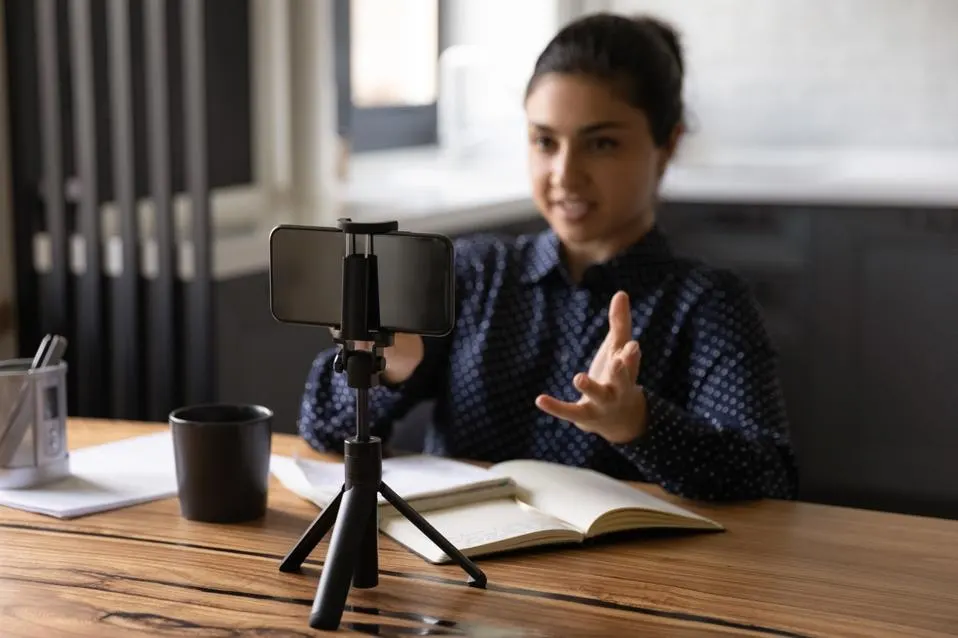AI Is Replacing Humans In The Interview Process - What You Need To Know To Crush Your Next Video Interview
117 job applications are submitted on LinkedIn every second. That equates to more than ten million job applications each day!

Factor in other job search engines like Indeed, Glassdoor and ZipRecruiter, all of which make applying for a job as simple as a few clicks on your keyboard, and you can see how recruiters are being inundated with resumes.
It’s not surprising then that companies in search of the most qualified candidates are seeking more efficient ways to sift through this flood of applicants. And so, a new and rapidly growing trend has emerged – the use of AI in the recruitment process. A surprisingly large number of companies – Harvard Business Review estimates as many as 86% of all employers – are now limiting or eliminating human involvement in the initial stages of the interview process and replacing the interviewer with artificial intelligence.
Automated Video Interviews – The Solution or A New Set of Problems
The concept behind the automated video interview, or AVI (also called on-demand or asynchronous interviews), is quite simple. Chosen applicants are invited to engage with a hiring platform (the most popular platforms include names like SparkHire, myInterview and HireVue) to record and submit video responses to written questions that appear on applicants’ screens. AI algorithms analyze the video responses, looking for things like the applicant’s facial expressions, use of key words and tone of voice. A transcript of the responses along with a report summarizing the candidate’s performance are then provided to the recruiter who decides if the candidate advances to the next phase of the interview process.
There are obvious advantages to this type of interview. Employers gain efficiencies by screening significantly more applicants using significantly fewer human resources. And, in theory, AVIs remove implicit bias making the interview process more objective. Applicants appreciate the flexibility of being able to choose when they conduct the interview and the convenience of being able to do so in a comfortable location of their choice.
However, the process is also fraught. AI recruitment platforms have been criticized for building bias into their algorithms. And job candidates find AVIs confusing because the format is relatively new, stress-inducing because of the time constraints imposed on responses and unsettling because of the lack of transparency around how they will ultimately be assessed.
“The first time I did a video interview, it was super nerve-wracking,” says Julia, a second-year student at Brown University. She’s currently interviewing for summer internships in investment banking, and didn’t feel confident in her responses because she wasn’t expecting the time constraint. “It’s definitely an anxiety-inducing situation to have a timer at the top of the screen. And there is a learning curve with how to say everything succinctly and fit in all the points you want to make.”
How to Nail an AVI
Whether you appreciate the efficiencies AI brings to the recruiting process or lament the loss of human interaction, one thing is certain. AVIs are here to stay. Charlotte Burrows, the chair of the Equal Employment Opportunity Commission, estimates that 99% of Fortune 500 companies now use some form of automated tool as part of their hiring process. And I am being flooded with requests from job applicants asking how best to prepare for and conduct an AVI.
Visit the website of the interview platform for tips.
Most automated video interview platforms offer useful tips, videos, blog posts and other candidate resources around how best to engage with their platform. Take a look well in advance of your interview.
Practice talking to no one.
Having a conversation without another person can feel awkward. Practice responding to questions out loud and while looking into your computer or phone camera. Standout.com is a subscription service that allows users to practice video interviews and receive AI-driven feedback.
Find your keywords.
Algorithms will give you brownie points for fluently working keywords into your responses. To find those keywords, research the company and its industry, and familiarize yourself with the details of the job description, including job title, responsibilities and qualifications.
Have prepared responses for the obvious questions.
Having responses at the tip of your tongue for some of the more common interview questions can take away a great deal of pre-interview anxiety that comes with talking into a black box. “My friends and I all share the same level of discomfort around having only one take and one minute to answer a question we’re potentially unprepared for,” says Julia.
Location, location, location.
Choose a space to conduct the interview that provides ample light on your face or purchase a ring light. Backlight will obscure your face. Also, choose a location that is free from potential distractions (this includes silencing your phone and going on “do not disturb” mode). And remember, computer vision can analyze what it sees around you so choose a simple background like a plain wall or bookshelf.
Look directly into the camera, not at yourself.
Make sure you know where the camera on your phone or computer is. It is usually indicated by a small green light on top of your computer or the top right or left of the “notch” on the front of your iPhone. Looking directly into the camera when speaking mimics eye contact with the interviewer and helps you seem more present and in the moment.
Learn from your mistakes.
If the platform allows, watch back your initial response and take notes of areas that need improvement. Take a few minutes to rework those areas and re-record.
Be extra enthusiastic.
Being on camera drains your energy so it’s important to be a bit more energetic when recording your responses than you would normally be for an in-person interview.
Send the thank you note.
Just because the technology is new, doesn’t mean traditional etiquette doesn’t apply. Send a thank you email to the recruiter following the submission of your interview responses and inquire about next steps.
While many job applicants, especially younger ones, are still working their way up the AVI learning curve, asynchronous video interviews are becoming an increasingly common first line to many corporations’ hiring processes. The key to success is practice and preparation.
Jane Hanson, Bentley Lewis Advisor
Learn more about Bentley Lewis
